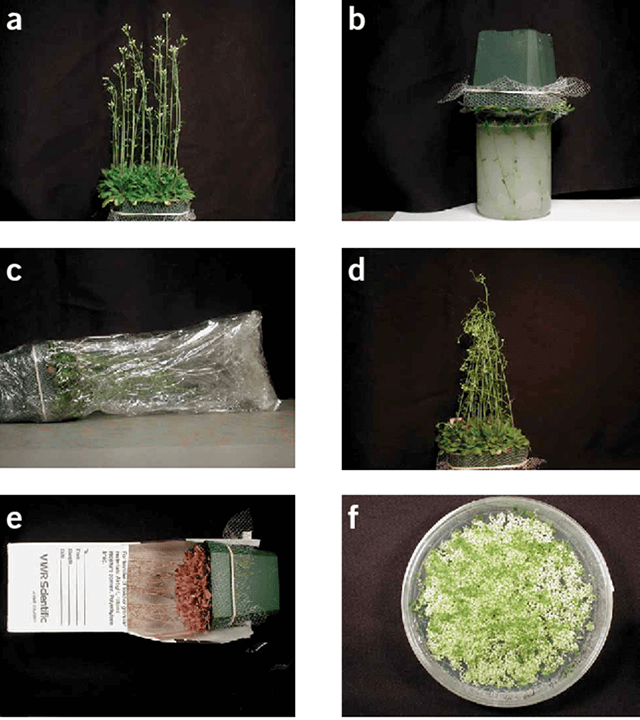Lifeasible provides multiple alternative transformation systems within the model plant Arabidopsis thaliana, specialized for your needs, including gene function analysis, gene expression, promoter activity evaluation, as well as protein-protein or protein-DNA interaction studies.
A. thaliana, also named mouse-ear cress, is the most widely used model organism in the plant field. With a relatively small genome (135 Mbp), short life cycle and capability to grown in a wide range of environmental settings (growth rooms, growth chambers, greenhouses, window ledges, and outdoors), A. thaliana has been regarded as an ideal biological system for the study of plant genetics, evolution, population genetics, and plant development.
So far, the best developed and most widely used method for generating transgenic Arabidopsis plants is the Agrobacterium-mediated floral dip method. During the transformation process, inflorescences of Arabidopsis plants, labeled as “T0” plants, are immersed in or sprayed with the suspension of Agrobacterium tumefaciens (the most commonly used strain is GV3101) carrying a specific plant transformation vector (Figure 1 a to e). Following plant maturation, the seeds of the T0 plants are collected and then subjected to a selection plate containing specific antibiotics for gaining positive transgenic individuals (the T1 plants) (Figure 1f). Comparing to other plant transformation methods, the floral dip method requires minimal labor, relatively simple equipment, and few specialized reagents. While essentially, it generally provides higher transformation efficiency (more than 1% under optimized conditions) (1) .
 Figure 1. Agrobacterium-mediated transformation of Arabidopsis thaliana using the floral dip method (2).
Figure 1. Agrobacterium-mediated transformation of Arabidopsis thaliana using the floral dip method (2).
For transient transformation, three of the most commonly used methods are Agrobacterium-mediated transformation using leaves, microparticle bombardment, and polyethylene glycol (PEG)-mediated transformation for protoplasts. In those methods, vectors carrying a specific reporter system (i.e. promoter-of-interest fused with a GUS/LUC/fluorescence protein gene) or a fusion protein driven by a constitutive promoter (designed for subcellular localization study, protein activity evaluation or protein-protein interaction study) are delivered into the nucleus of the host plant cell, followed by analysis of gene expression levels and functional characterizations.
Lifeasible has developed an efficient and versatile platform that offers service for all A. thaliana transformation methods mentioned above. We pride ourselves on the large selection of vectors, selection markers, and A. thaliana ecotypes and mutants. We strive to give our customers the highest quality services to acclimate their researches.
Reference: